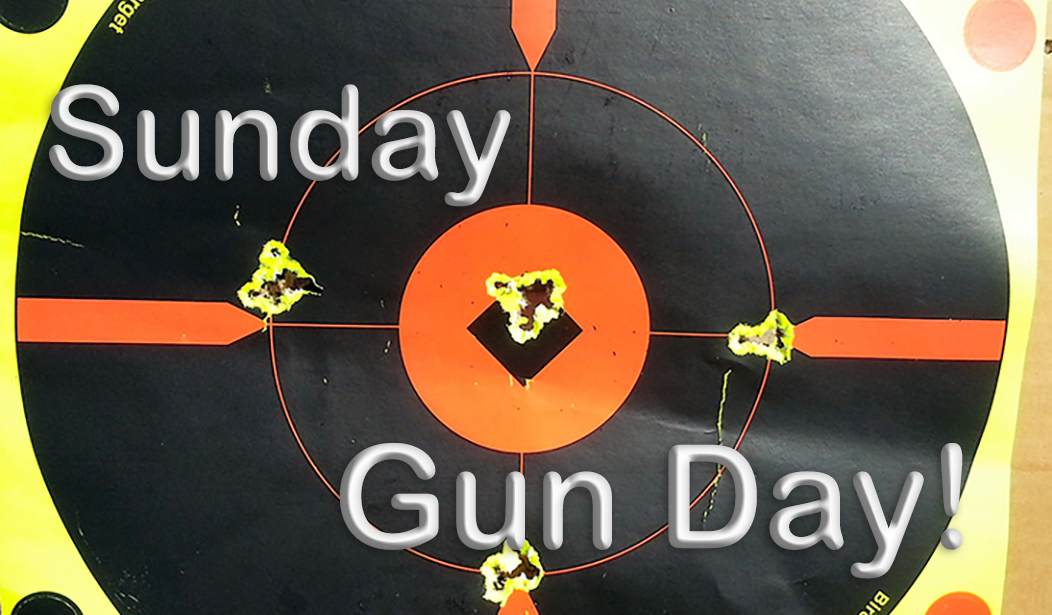The Browning Automatic Rifle
The advent of automatic weapons changed everything in land warfare, and the Great War (World War I) was when the world got a good, hard look at just how true that was. Oh, machine guns and other automatic weapons were used before this, but the Great War was one where everyone was involved – that’s why they call them world wars – and everybody saw the effect.
When American troops first went Over There, they had a variety of machine guns, mostly from other countries. Those included the French Hotchkiss M1909 Benét–Mercié, the M1895 Colt–Browning “Potato Digger,” the British-made Lewis gun, and our own M1917 Browning machine gun. The M1917 was a big, heavy, water-cooled affair, not very portable. The powers-that-be at the time saw the need for a more portable automatic weapon; a “machine rifle,” in the terms of the day, or what we would call a squad automatic rifle.
Enter, once again, the DaVinci of firearms, John Browning.
The Design
The story of the Browning Automatic Rifle – the BAR – begins with John Browning, who began design work on the automatic rifle in 1910. He wasn’t successful in generating any military interest in the piece until the American entry into the Great War in 1917, though. When that happened, the Maestro packed up two automatic weapons to Washington, a water-cooled machine gun that would become the M1917, and a shoulder-fired automatic rifle that he called the “Browning Machine Rifle.” Both weapons were demonstrated by Browning himself at a place called Congress Heights for a crowd of 300. Browning was quickly offered contracts for both pieces.
The ”Browning Machine Rifle” was adopted by the US military as the “M1918 Rifle, Caliber .30, Automatic, Browning,” or, as the troops called it, the “Browning Automatic Rifle” (BAR). It was a big, heavy piece, nearly four feet in length, weighing in at 16 pounds. It was a select-fire affair, with a three-position safety: Safe, semi-auto, and full-auto. The air-cooled gun was fed from a 20-round magazine, although later, 40-round mags were issued. It fired from an open bolt and had a rate of fire of 500 to 650 rounds per minute. Unfortunately, the barrel was threaded into the frame, making a barrel swap in combat impossible; this limited any sustained fire.
It proved a difficult piece to fire standing, and the practice became, when moving, to carry the gun on an assault sling to fire from the hip while advancing.
The Guns
The BAR made it Over There just at the end of the conflict, but the troops – including a young U.S. Army second lieutenant named Val Browning – liked it immediately, as it allowed a light machine-gunner (now we would say an automatic rifleman) to fire on the move, something that wasn’t possible with the water-cooled M1917.
The Army’s 79th Infantry Division was the first unit to receive the BAR, in July of 1918. It made quite an impression, but the Great War ended four months later.
It was in World War 2 that the BAR earned its lasting fame. The big gun was used in every theater of operations by the Army and the Marine Corps, and despite its having been designed in a time of static trench warfare, it gave the troops advantages that regular machine guns didn’t: Mobile, high-volume fire support. Like most Browning designs, the BAR was tough, reliable, and packed a punch.
See Also: Sunday Gun Day Vol. II Ep. IX - the M1 Carbine and the .30 Carbine Cartridge
Sunday Gun Day Vol. II Ep. VIII - The Famous Thompson Submachine Gun
But don’t take my word for it: Listen to World War 2 Marine BAR gunner Roy Roush.
Variants of the BAR included:The M1922, used by the U.S. Cavalry. This one had a heavy, ribbed barrel and a spiked bipod.
In 1932, a short “Jungle BAR” was evaluated by the Army, but it wasn’t adopted; only six were made.
The M1918A1 shared the cavalry’s spiked bipod and also had a hinged steel butt plate to enhance control in rock & roll mode.
The M1918A1 had an improved stock and a rate-reducer mechanism that allowed two rates of fire. Many, maybe most of these guns were produced by retrofitting older guns. This is the primary version used during and after World War 2.
There was also a spin-off, of sorts, of the BAR: The Colt R 80 Monitor “machine rifle.” This was effectively the same gun, with some differences in stock and sighting equipment, and was marketed as the ideal piece for prison guards – although, before 1934, anyone could buy one.
The BAR also saw service in Korea, where it was still the Army’s primary squad automatic weapon, and to some extent in Vietnam. Many allied forces used it as well; around a quarter of a million BARs in all were produced, and they showed up in the hands of soldiers from China to Argentina. U.S. Army Reserve and National Guard units still had BARs in their armories as late as 1975.
The Sporter
It seems appropriate to mention the “other” Browning Automatic Rifle, that being the Belgian-made sporting rifle, the other rifle to carry this appellation. This fine rifle, also called the BAR, is a full-size, full-length sporting rifle capable of handling not only .30-06 length cartridges but also the big belted magnums.
In fact, the BAR Sporter is, to my knowledge, the only semi-auto rifle to fire one of my favorite big-game rounds: The .338 Winchester Magnum, although to my knowledge it hasn’t been offered in that caliber for a few years. There are still plenty on the market, and I’ve been watching for one of these fine FN-made rifles for a few years now; maybe, when the right combination of gun and bank balance present themselves, I’ll give the new BAR a try.
Where It Stands Now
The BAR has not been in use by the U.S. military since Vietnam. It has been replaced by more effective, more modern squad automatic rifles, including, in my time in service, the M249 Squad Automatic Weapon (SAW). But the great old BAR still commands a lot of nostalgia value, and you sure seem to see them regularly at machine gun shoots if you’re into that sort of thing.
Here’s the fun part: You can buy a semi-auto version of the famous World War II BAR right now, right here in the United States, from a company called Ohio Ordnance Works. That looks downright fun, and when you’re talking aimed fire, frankly, being able to go full-auto is fun but not as practical as you might think.
As is true of so many of John Brownings designs, the BAR was a standout in its time. It didn’t last the way some of Browning’s other designs did, like the Colt-Browning M1911 or the Belgian-made Hi-Power, but it was a game-changer in its day. It combined the traits of a rifle and a machine gun, and while that kind of blend doesn’t always work, it provided the American grunt with mobile power that, before then, hadn’t been possible.
That’s a pretty good legacy for any shootin’ iron.















